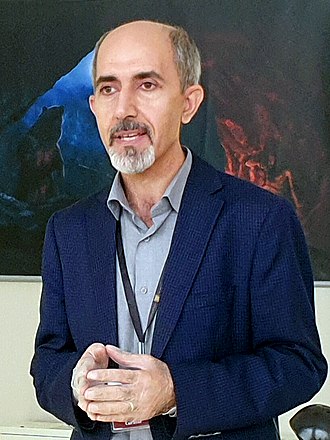Fereidoun Biglari

Fereidoun Biglari (Persian: فریدون بیگلری) is an Iranian archaeologist and a museum curator.
Fereidoun Biglari is co-founder and head of the Paleolithic department in National Museum of Iran which established in 2001. He is serving as a member of the research council of the Iranian Center for Archaeological Research (ICAR). He also editor-in-chief of “Journal of Iranian Archaeology ” since its establishment in 2010. The journal is a scholarly journal about ancient Iran and neighboring regions. Since 1993, he have been directing archaeological field projects in various parts of Iran. His field of research covers Lower Paleolithic of Iran and western Asia and Middle Paleolithic of Iran in general and Zagros region (Iran and Iraq) in particular.[citation needed]
He is co-director of a joint archaeological project in collaboration with the laboratory “PACEA” Prehistory and Quaternary Geology Institute (CNRS-University of Bordeaux 1), Bordeaux, France in the Central Zagros and Isfahan regions. He was awarded a doctoral fellowship in 2007, and currently is a PhD candidate at University of Bordeaux 1. He established the Zagros Paleolithic Museum in Kermanshah in collaboration with Kermanshah provincial office of the Iranian Cultural Heritage Organization in 2008. The Museum is the first established museum in Iran devoted to the Paleolithic period of Iran.[citation needed]
He has been continuously involved in the research, surveys, and excavations of Paleolithic sites in Iran which resulted in many discoveries in both Zagros and the Iranian Central Plateau. His most recent project was Darian Dam Archaeological Salvage Program, planned by the Iranian Center for Archaeological Research before flooding the Darian Dam reservoir in the Hawrāmān region of Kurdistan and Kermanshah, Iran. Under his direction, four teams excavated 16 archaeological sites, of which four date back to Middle Paleolithic, Upper Paleolithic, and Epipaleolithic periods.[citation needed]
He is active in presenting paleolithic archaeology to the public through different media such as newspapers, magazines, exhibitions,[1] Instagram, and TV Telecast.[2]
